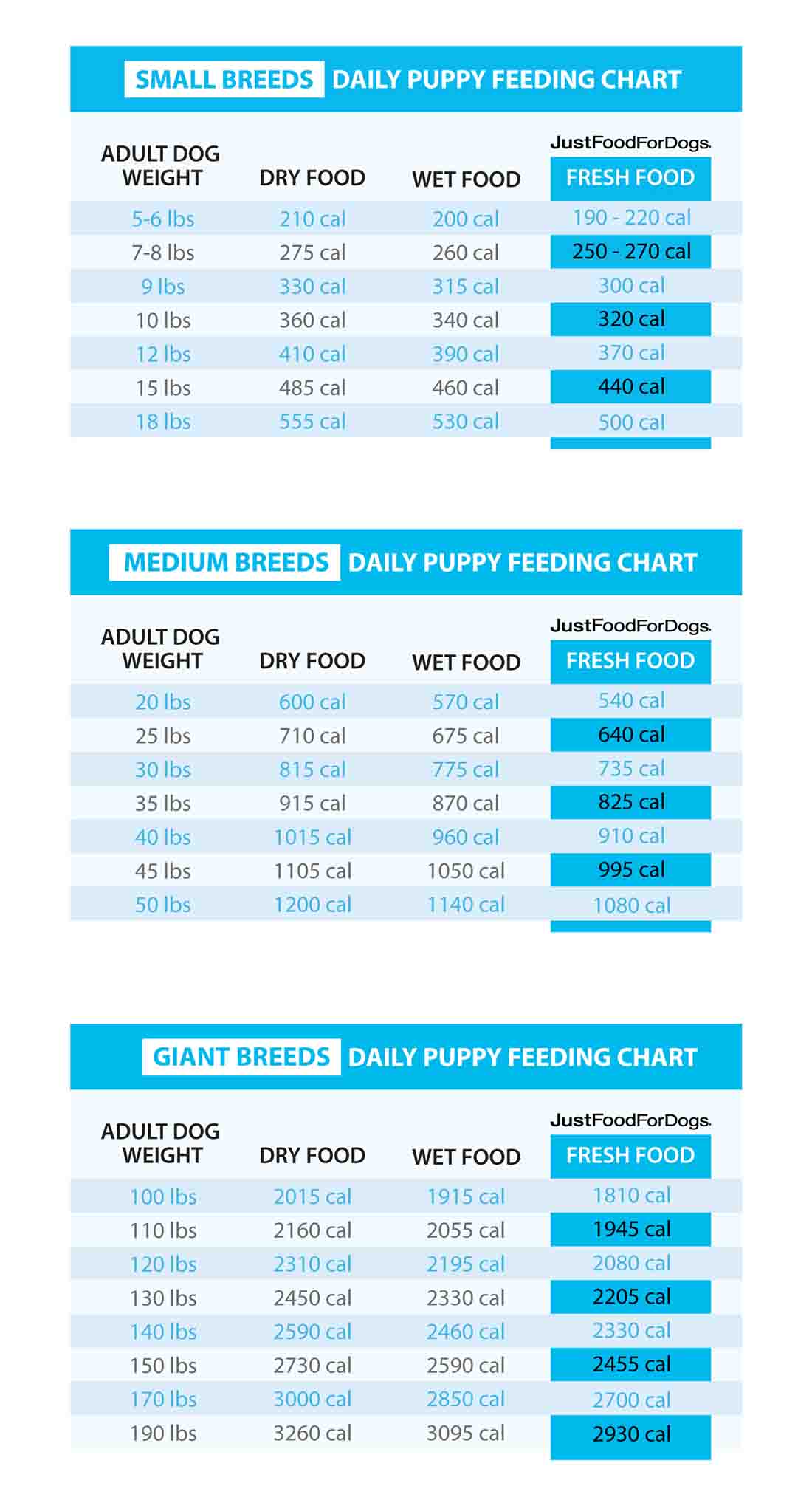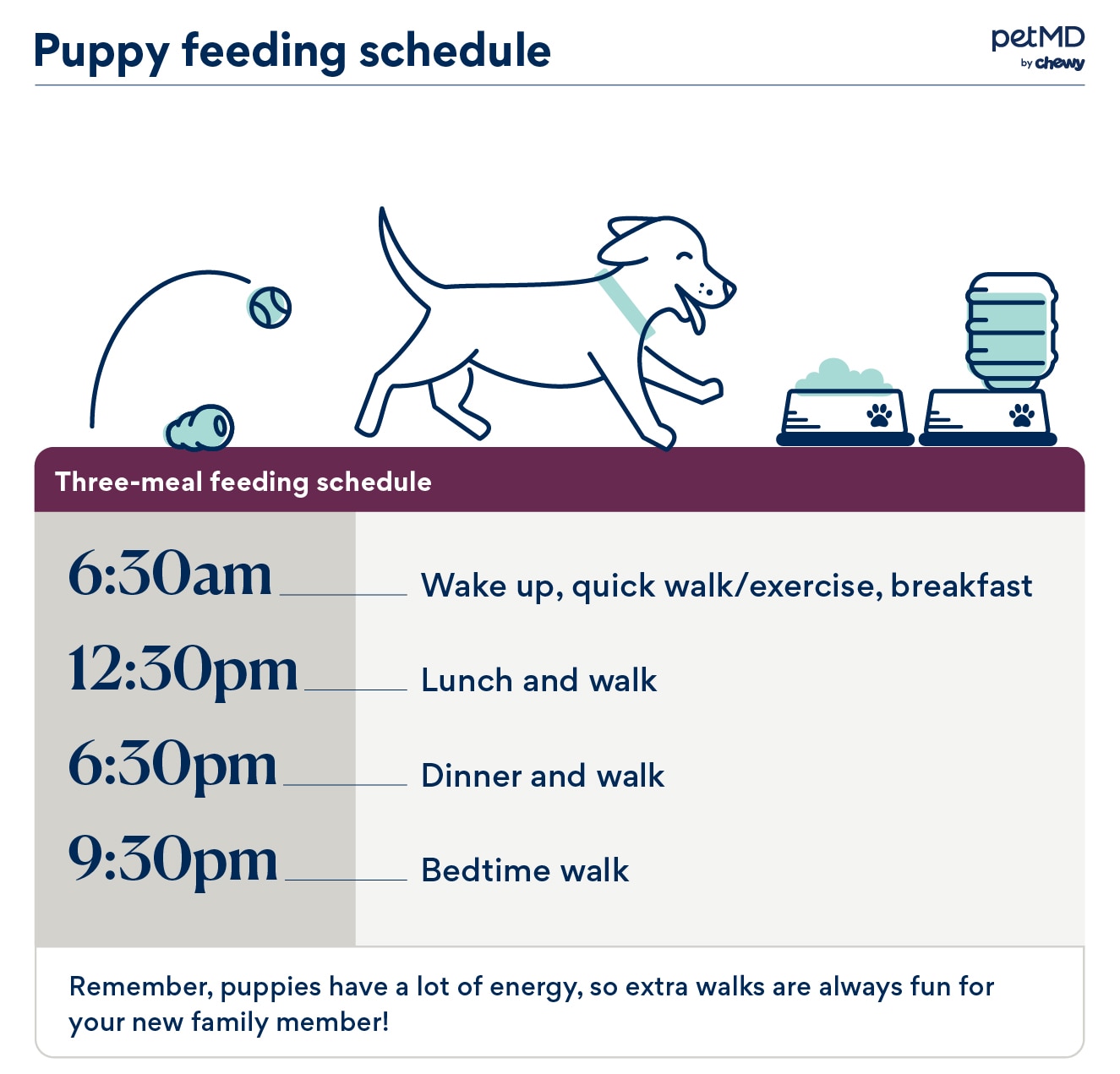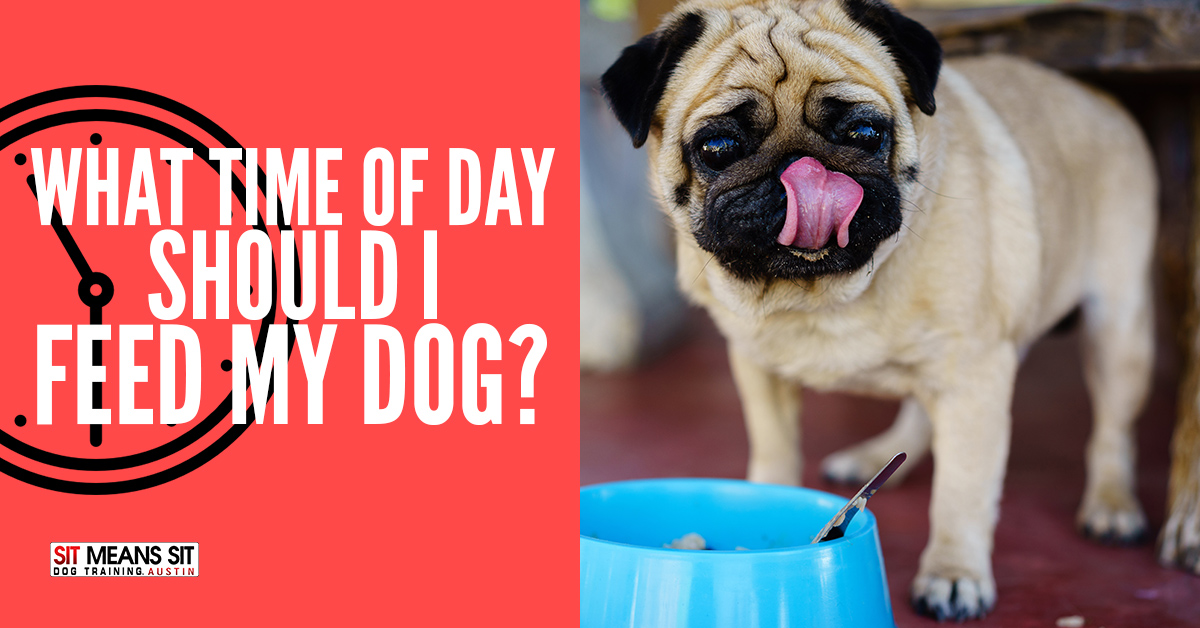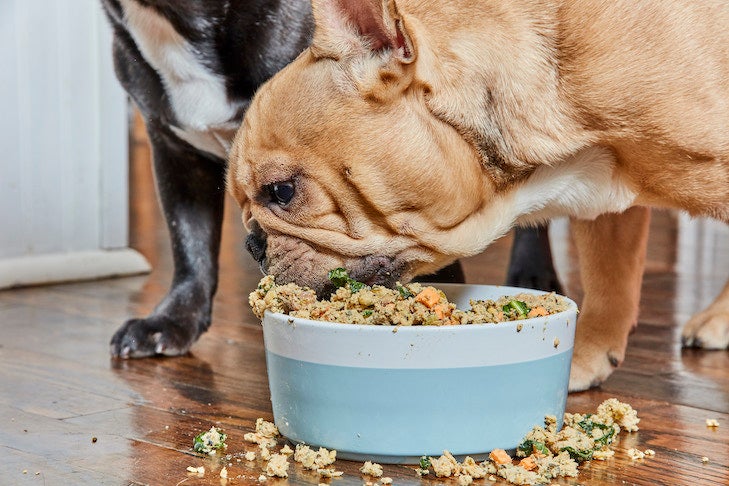The best feeding schedule for adult dogs typically includes two meals per day. Each meal should consist of a balanced diet appropriate for their size and activity level.
Feeding your adult dog on a consistent schedule helps maintain their health and weight. An ideal routine includes two meals spaced about 12 hours apart. This approach prevents overeating and promotes digestive health. Ensure you use high-quality dog food that meets their nutritional needs.
Factors such as age, breed, and activity level influence the amount of food required. Always provide fresh water alongside meals. Monitoring your dog's weight and adjusting portions as needed is crucial. A regular feeding schedule not only supports physical well-being but also strengthens the bond between you and your furry friend.

Credit: www.justfoodfordogs.com
Introduction To Adult Dog Nutrition
Understanding adult dog nutrition is crucial for your pet's health. Proper nutrition supports their energy levels and overall well-being. A balanced diet helps prevent health issues and promotes longevity. Knowing what to feed your dog is essential for their happiness.
The Importance Of A Balanced Diet
A balanced diet provides essential nutrients. It includes proteins, fats, carbohydrates, vitamins, and minerals. Each nutrient plays a vital role in your dog's health.
- Proteins: Build and repair tissues.
- Fats: Provide energy and support cell function.
- Carbohydrates: Supply energy and aid digestion.
- Vitamins: Support metabolic functions.
- Minerals: Maintain strong bones and teeth.
Feeding your dog a balanced diet can lead to:
- Healthier skin and coat.
- Stronger immune system.
- Improved digestion.
- Better weight management.
Factors Affecting An Adult Dog's Diet
Several factors influence an adult dog's diet. Each dog has unique needs. These factors include:
| Factor | Description |
|---|---|
| Age: | Older dogs may need fewer calories. |
| Weight: | Overweight dogs require special diets. |
| Activity Level: | Active dogs need more calories. |
| Health Issues: | Dogs with health problems may need special foods. |
| Breed: | Different breeds have different nutritional requirements. |
Consult your veterinarian for personalized advice. They can help determine the best diet for your adult dog.
Analyzing Your Dog's Dietary Needs
Understanding your dog's dietary needs is essential. Proper nutrition helps maintain health and energy levels. Every dog is unique. Factors like age, size, and activity play a role.
Assessing Activity Levels
Activity levels greatly influence a dog's dietary requirements. Here’s how to assess your dog's activity:
- Low Activity: Dogs that are mostly indoors or older.
- Moderate Activity: Dogs that enjoy daily walks or playtime.
- High Activity: Active dogs that run, hike, or compete.
Use the following guide to adjust portions:
| Activity Level | Daily Caloric Needs |
|---|---|
| Low | 30 calories per pound |
| Moderate | 40 calories per pound |
| High | 50-60 calories per pound |
Accounting For Health Conditions
Health conditions can affect your dog's diet. Certain issues require special attention.
- Obesity: Reduce calorie intake and opt for low-fat food.
- Allergies: Identify allergens and choose hypoallergenic options.
- Diabetes: Control carbohydrate intake and offer balanced meals.
Consult a veterinarian for tailored recommendations. Regular check-ups help monitor health. Adjust the diet as needed to keep your dog healthy and happy.
Creating A Feeding Schedule
Establishing a proper feeding schedule for your adult dog is crucial. It helps maintain their health, weight, and energy levels. A consistent routine can also aid in potty training and behavioral issues.
Frequency Of Meals
The frequency of meals can differ based on your dog's needs. Most adult dogs thrive on two meals a day. This helps manage hunger and prevents overeating. Here's a quick breakdown:
| Dog Size | Meal Frequency |
|---|---|
| Small Dogs | 2 meals per day |
| Medium Dogs | 2 meals per day |
| Large Dogs | 2 meals per day |
Some dogs may require three smaller meals. This is especially true for those with specific health issues. Always consult your vet for personalized advice.
Best Times To Feed
Choosing the right times to feed your dog is essential. Here are some recommended feeding times:
- Morning: 7:00 AM – 8:00 AM
- Evening: 6:00 PM – 7:00 PM
Consistency is key. Try to feed your dog at the same times every day. This creates a routine that dogs appreciate. It also helps manage their digestion and energy levels.
In busy households, consider using an automatic feeder. This ensures your dog gets their meals on time, even when you're busy.
Types Of Dog Food
Choosing the right type of dog food is crucial for your pet's health. Different types offer various benefits. Understanding these options helps you make informed choices.
Dry Vs. Wet Food
Dry food, also known as kibble, is popular among dog owners. It is convenient and easy to store. Here are some key points:
- Long shelf life: Dry food lasts longer than wet food.
- Dental benefits: Chewing kibble helps reduce plaque.
- Cost-effective: Generally cheaper than wet options.
Wet food, or canned food, has its own advantages. It often contains more moisture. This can help keep your dog hydrated. Consider these benefits:
- Higher palatability: Many dogs prefer the taste of wet food.
- Easy to digest: Wet food can be gentler on the stomach.
- Variety of flavors: Offers different flavors and textures.
| Type of Food | Advantages | Disadvantages |
|---|---|---|
| Dry Food | Long shelf life, dental benefits, cost-effective | Less moisture, some dogs may dislike |
| Wet Food | Higher palatability, easy to digest, variety | More expensive, shorter shelf life |
Homemade Meals And Raw Diets
Homemade meals offer control over ingredients. You can customize recipes to suit your dog’s needs. Benefits include:
- Fresh ingredients: You know what goes into the food.
- Allergy management: Control allergens in meals.
- Variety: Change recipes to keep meals interesting.
Raw diets have gained popularity among dog owners. These diets include uncooked meat and vegetables. Consider these points:
- Natural diet: Mimics what dogs ate in the wild.
- Improved coat: Many owners report shinier fur.
- Better digestion: Dogs may digest raw food easier.
Both homemade and raw diets require careful planning. Seek advice from a vet. Ensure all nutritional needs are met.
Portion Control And Obesity Prevention
Maintaining a healthy weight in adult dogs is crucial. Obesity leads to many health issues. Portion control plays a big role in preventing obesity. Feeding the right amount helps your dog stay active and happy.
Calculating The Right Amount
Knowing how much to feed your dog is essential. Follow these steps to calculate the right portion size:
- Determine your dog’s ideal weight.
- Check the feeding guidelines on your dog’s food packaging.
- Use a measuring cup for accurate portions.
Most dog foods recommend daily amounts based on weight. Here’s a simple table to guide you:
| Dog Weight (lbs) | Daily Food Amount (cups) |
|---|---|
| 10 | 1/2 – 1 |
| 20 | 1 – 1 1/2 |
| 50 | 2 – 3 |
| 80 | 3 – 4 |
Always adjust based on your dog's activity level. Active dogs may need more food. Less active dogs need smaller portions.
Monitoring Weight And Adjusting Portions
Regularly check your dog's weight. Weigh your dog every month. This helps you spot weight changes quickly.
If your dog gains weight, reduce food portions. If losing weight, you can increase portions slightly. Always make changes gradually.
Pay attention to your dog's body shape. Feel their ribs. They should be easy to feel but not visible. Follow these tips:
- Use a scale for accurate weight.
- Keep a log of your dog's weight.
- Consult a vet for advice.
Monitoring weight ensures your dog stays healthy. Adjust portions based on your observations. A healthy dog is a happy dog.
Supplements And Vitamins
Supplements and vitamins can boost your dog's health. They fill nutritional gaps in their diet. Choosing the right ones is essential for adult dogs. Always consult your vet before adding anything new.
Identifying Nutritional Gaps
Understanding your dog's specific needs is crucial. Each dog has unique dietary requirements. Here are some common signs of nutritional gaps:
- Low energy levels
- Poor coat condition
- Weight loss or gain
- Frequent illness
- Digestive issues
Pay attention to your dog's diet. Look for a balanced mix of proteins, fats, and carbohydrates. Sometimes, even a high-quality dog food can lack certain nutrients.
When To Consider Supplements
Supplements help when your dog shows signs of deficiency. Some scenarios include:
- Older dogs may need joint support.
- Dogs with allergies may benefit from omega fatty acids.
- Dogs recovering from illness may require extra vitamins.
- Active dogs can need more protein or energy boosters.
Popular supplements for dogs include:
| Supplement | Benefits |
|---|---|
| Fish Oil | Improves coat and skin health |
| Glucosamine | Supports joint health |
| Multivitamins | Fills nutritional gaps |
| Probiotics | Enhances digestive health |
Choose supplements based on your dog’s needs. Regular vet visits help monitor their health. Adjust diets or supplements as necessary.
Hydration And Its Role In Nutrition
Hydration is vital for your dog's overall health. Water is essential for digestion, circulation, and temperature regulation. A well-hydrated dog enjoys better energy levels and improved organ function. Proper hydration also aids in nutrient absorption. Always ensure your dog has fresh, clean water available.
Water Intake Recommendations
Understanding how much water your dog needs is crucial. The general guideline is:
- Dogs should drink about 1 ounce of water per pound of body weight.
- Active dogs may need more water.
- Weather affects hydration needs; hot days require extra water.
For example, a 50-pound dog needs around 50 ounces of water daily. Here's a quick reference table:
| Dog Weight (lbs) | Daily Water Intake (oz) |
|---|---|
| 10 | 10 |
| 20 | 20 |
| 30 | 30 |
| 40 | 40 |
| 50 | 50 |
| 60 | 60 |
Signs Of Dehydration
Recognizing dehydration is key to keeping your dog healthy. Common signs include:
- Dry gums and tongue.
- Loss of skin elasticity.
- Excessive panting.
- Sunken eyes.
- Low energy or lethargy.
If you notice these symptoms, offer water immediately. Contact your vet if signs persist.

Credit: www.petmd.com
Common Feeding Mistakes To Avoid
Feeding your adult dog can be simple. Avoiding common mistakes ensures better health. Here are some frequent errors dog owners make.
Irregular Feeding Times
Dogs thrive on routine. Irregular feeding times can lead to confusion and anxiety. Establish a consistent schedule.
- Feed your dog at the same times each day.
- Use a timer for reminders.
- Avoid skipping meals.
Benefits of a regular feeding schedule:
| Benefit | Description |
|---|---|
| Better Digestion | Consistent meals help with digestion. |
| Weight Management | Regular feeding prevents overeating. |
| Reduced Anxiety | Predictable times reduce stress for your dog. |
Inappropriate Treats And Snacks
Treats can be rewarding but can also cause problems. Not all treats are suitable for adult dogs.
- Choose healthy, dog-friendly treats.
- Limit high-calorie snacks.
- Watch for allergies or sensitivities.
Common inappropriate treats:
- Chocolate
- Grapes and raisins
- Onions and garlic
- Macadamia nuts
Always check treat labels. Feed treats in moderation to maintain a healthy diet.
Senior Dogs: Adjusting The Diet As Your Dog Ages
As dogs age, their nutritional needs change. Senior dogs require special care in their diet. Adjusting their food helps maintain health and energy. It can also prevent various health issues.
Recognizing Changing Nutritional Needs
Senior dogs have unique dietary needs. These changes often arise due to:
- Slower metabolism
- Decreased activity levels
- Dental issues
- Joint problems
- Health conditions like diabetes or kidney disease
Look for signs that your dog may need a diet change:
- Weight gain or loss
- Changes in appetite
- Difficulty in chewing
- Fatigue or less playfulness
Understanding these signs helps you adjust their diet. Consult your vet for personalized advice.
Transitioning To Senior Dog Formulas
Switching to a senior dog food formula is essential. These formulas are designed to meet older dogs' needs. Look for formulas that have:
| Nutritional Component | Benefits |
|---|---|
| Lower calories | Prevents obesity |
| High fiber | Aids digestion |
| Joint supplements | Supports mobility |
| Antioxidants | Boosts immune system |
| Quality protein | Maintains muscle mass |
Transition slowly to avoid stomach upset. Mix old food with new for about a week. Monitor your dog's response closely.
Feeding senior dogs the right diet keeps them healthy. Adjustments can improve their quality of life.

Credit: sitmeanssit.com
Consulting With A Veterinarian
Consulting with a veterinarian is essential for your dog's health. They guide you in creating the best feeding schedule for your adult dog. Each dog is unique, and professional advice ensures your pet thrives.
The Role Of Regular Check-ups
Regular check-ups help monitor your dog's health. Your vet can assess weight, diet, and overall well-being. Here are some key benefits:
- Weight Management: Prevent obesity or underweight issues.
- Diet Adjustments: Tailor food choices based on health needs.
- Health Screenings: Detect problems early with routine tests.
Check-ups also allow you to discuss any changes in behavior or appetite. Your vet can recommend the best feeding schedule based on age, breed, and activity level.
When To Seek Professional Advice
Seek veterinary advice when:
- Your dog experiences sudden weight changes.
- They show signs of food allergies or sensitivities.
- Appetite fluctuates frequently.
- There are changes in energy levels.
Immediate professional help can prevent serious health issues. Regular consultations keep your dog healthy and happy.
Frequently Asked Questions
What Is The Best Feeding Schedule For Adult Dogs?
The best feeding schedule for adult dogs typically includes two meals a day. This helps maintain their energy levels and digestion. It's essential to feed them at the same times daily to establish a routine. Always consult your veterinarian for specific dietary needs based on your dog’s health.
How Much Food Should I Give My Adult Dog?
The amount of food depends on your dog's size, age, and activity level. Generally, adult dogs eat between 1 to 3 cups of food daily. Always refer to the feeding guidelines on the dog food packaging. Adjust the portion as needed based on your dog's weight and health.
Should I Change My Dog's Feeding Schedule?
You might need to change your dog's feeding schedule during life changes. Factors include age, health issues, or activity level. If your dog seems restless or hungry, consider adjusting mealtime. Always consult your veterinarian before making significant changes to their feeding routine.
Can I Feed My Dog Once A Day?
Feeding your dog once a day is possible but not ideal for all dogs. Some dogs may thrive on this schedule, while others may experience digestive issues. If you choose this method, ensure the portion size is appropriate. Monitor your dog's health and energy levels regularly.
Conclusion
Establishing a consistent feeding schedule for your adult dog is crucial for their overall health. Proper nutrition supports their energy levels and keeps them happy. Remember to adjust portion sizes based on age, weight, and activity level. A tailored feeding plan ensures your furry friend thrives for years to come.




















